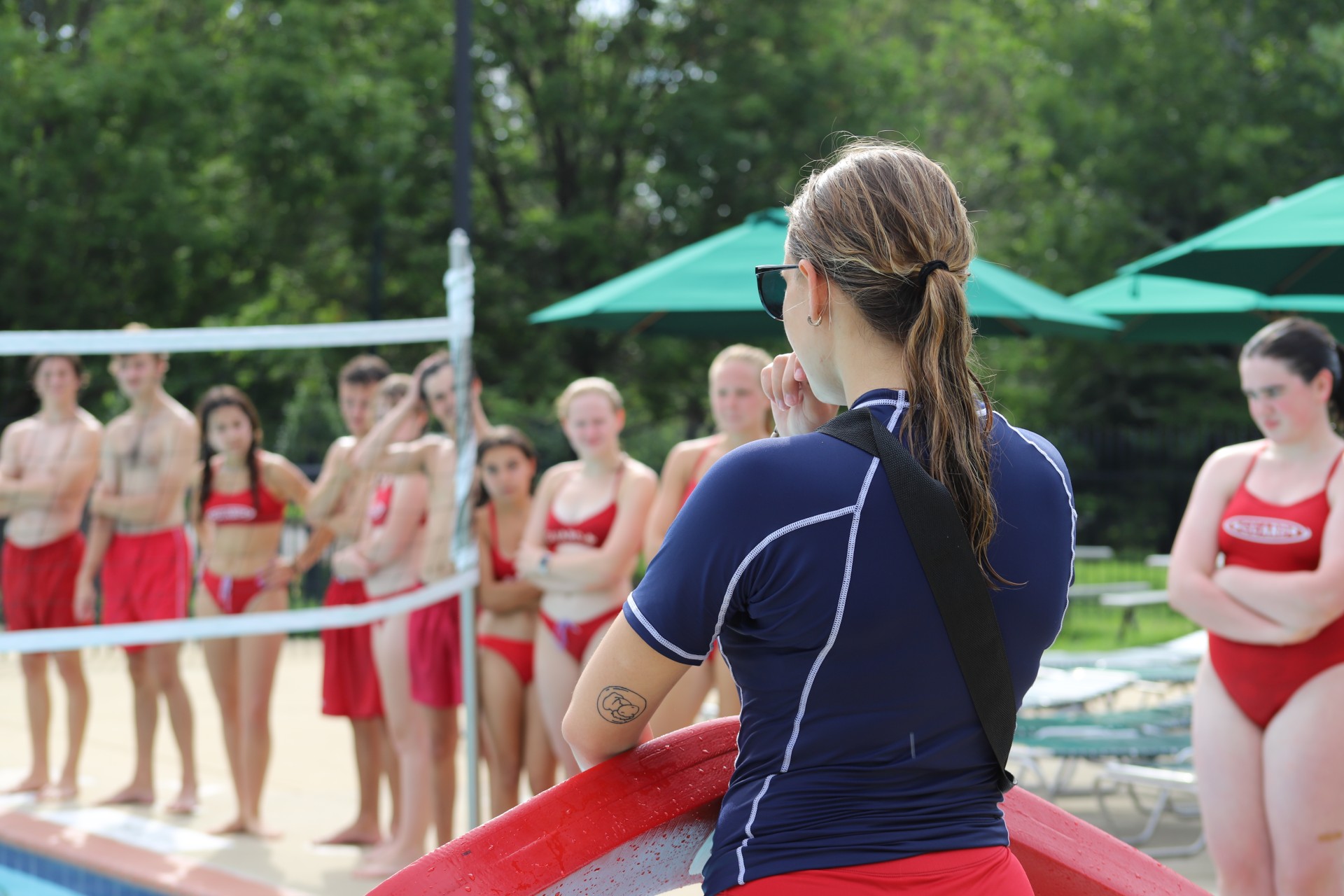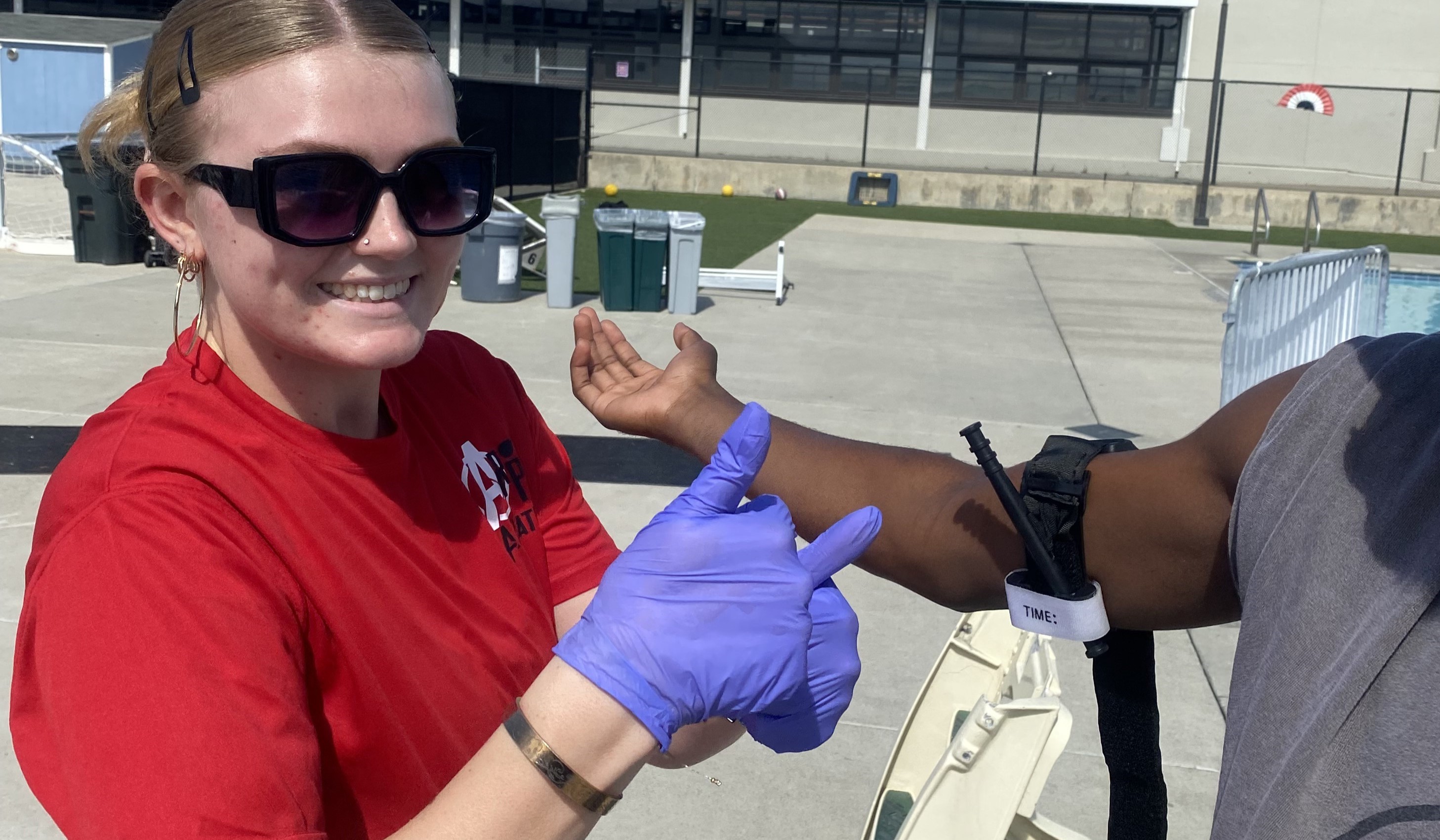Every spring, headlines warn that pools will close, beaches will be understaffed, and swimmers will be left without access. The reason? A “lifeguard shortage.”
What if the real issue isn’t a shortage at all, but the way we approach lifeguarding?
The American Lifeguard Association annually warns that half the nation’s 309,000 public pools face closure or reduced hours. Yet data from the Bureau of Labor Statistics show that employment levels in lifeguarding and related jobs have remained steady post-COVID.
We’ve found that the workforce exists, but what young people want from their work experience has changed — and continues to evolve faster than many employers have. The difference between struggling and thriving isn’t luck. At The Amenity Collective’s Commercial Aquatics brands — American Pool, Continental Pool, and Swim Club Management Group — we’ve shown that when you invest in employees, build a culture of value, and adapt to workforce trends, employee shortages don’t actually exist.
We’ve seen it firsthand, moving from a perceived shortage to successfully staffing more than 2 million hours across 1,600+ locations each of the past two years.
What employees told us
For years, the lifeguard hiring model remained the same — and it seemed to work. But gradually, we started noticing the signs: Lifeguards weren’t returning like they used to, and new recruits weren’t sticking around. The job itself hadn’t changed, but what employees expected from their work experience had.
Knowing we couldn’t solve the issue without understanding it, we went directly to our lifeguards to ask what mattered most. Through conversations, check-ins with supervisors, and employee surveys, we asked a crucial question: What makes lifeguards stay, and what makes them leave?
The responses gave us a clear road map. Lifeguards told us that flexibility, engagement, and workplace culture — not pay — were the biggest factors in their decision to return.
These insights helped us shift focus. We were already offering competitive pay. But instead of assuming pay was the main driver, we made improvements that addressed what mattered most: creating a positive, flexible work environment where lifeguards felt valued and supported.
What we learned
Our survey results confirmed several key insights that debunked common myths about lifeguard staffing. They confirmed that staffing success comes from focusing on the people, not just the processes.
Myth: Lifeguards leave because of low pay.
Reality: Pay matters, but it’s not the biggest factor. Lifeguards said they stayed because they felt connected to their team, supported by leadership, and valued for their work. Culture, flexibility, and engagement kept them coming back, not better pay alone.
Myth: Lifeguarding is just a summer job with no long-term benefits.
Reality: Many of our full-time managers and leaders started as lifeguards. With structured pathways for growth, lifeguarding becomes a valuable stepping stone. We’ve seen staff members grow into supervisors, regional managers, and leadership roles throughout all the brands within the company.
Myth: Lifeguard training is all the same.
Reality: Lifeguards want more than just a course — they need proper onboarding and development to feel confident in their role. Investing in these areas has reduced our turnover, improved engagement, and increased referrals.
From data to action
Having gained these insights, we made key changes to improve retention and staffing reliability.
We enhanced our onboarding and training by expanding it to include professional development, customer service, and leadership skills. New hires arrive feeling prepared from day one, boosting their confidence on the pool deck and throughout their time with us.
We restructured scheduling models to better align with our lifeguards’ busy lives, whether to accommodate school, sports, or social commitments. On average, lifeguards work about 18 hours per week, making flexibility essential to keeping them committed to the job.
We introduced programs such as Guard of the Month, Guard Appreciation Week, and regular social media recognition. Lifeguards who feel seen and valued are far more likely to return.
While lifeguarding is more of a job than a career, investing in their experience is no different than our approach to full-time employees. The quality of service delivered never exceeds the level of investment made in the employee. By valuing, supporting, and empowering our employees, we create a culture where exceptional service thrives. By investing in our employees, we invest in our customers at the same time.
Setting realistic expectations
One of our biggest challenges was helping clients understand that unrealistic staffing expectations lead to burnout, turnover and, ultimately, unreliable service. Rather than overpromise on hours like some competitors, we chose to be realistic and transparent with clients whose staffing models needed to evolve to be sustainable. Many facilities had become accustomed to overpromising coverage — for example, staying open 12 hours a day or on weekdays before schools let out. We had to change that mindset.
This meant aligning schedules with our workforce. Instead of squeezing every possible hour out of staff, we worked with clients to create smarter schedules, balancing operational needs with employee well-being. Offering fewer hours than some competitors promised was a difficult decision, but it ensured pools stayed safely staffed — and established clear, mutual expectations.
We also encouraged clients to create a positive work environment, reminding them that members and guests who treat lifeguards with respect contribute directly to staff retention.
The result? Fewer disruptions, stronger engagement from lifeguards, and a more consistent experience for their guests. By prioritizing long-term stability over short-term sales, we built a model that continues to work year after year.
The results
The results speak for themselves. Our 35%+ staff return rate year after year has provided our clients with an exceptional and — equally important — reliable experience. Referrals continue to drive new hires, showing that our employees don’t just tolerate the job, they proudly promote it.
We successfully staffed more than 2 million hours across 17 operations, proving that a sustainable workforce model can succeed even at scale.
Our success didn’t happen by chance, but because we chose to invest in people. When lifeguards feel valued, they stick around — and everyone benefits. The industry doesn’t have a shortage problem; it has a change problem.
The blueprint
Rethink your hiring process — if it’s not working, change it. Focus on creating a positive employee experience, not just raising pay. Build a strong workplace culture and invest in staff beyond the certification. Your current employees are your best recruiters. Be realistic with scheduling — overpromising hours leads to frustration for both staff and customers.
Finally, support the lifeguards — all of them. Too often, the vital role they play is overlooked and underappreciated. At the end of the day, it’s that lifeguard in the stand — often young, sometimes in their first job — who’s out there doing everything they can to keep everyone safe.


